Since the early days of manned spaceflight, spacecraft have been able to dock (link up) with each other. The Gemini program carried out the first docking in 1966 as a step toward a successful Moon landing mission. Apollo Command Modules docked with the U. S. Skylab space station. The Space Shuttle, Soyuz
DEFEATING RADAR
During the Cold War, the United States and Soviet Union competed with each other to produce the most advanced military radar for their combat aircraft. They also developed ground-based radar to give early warning of a missile attack. This competition led to research into ways of defeating enemy radar. There are six main methods used to confuse or block radar systems:
• Electronic jamming: Sending out radio signals to block or swamp enemy radar.
• Generating false targets:
Sending out radio signals that make extra, confusing information appear on enemy radar screens.
• Chaff: Dropping metal strips from an aircraft to create confusing radar reflections.
• Decoys: Employing small flying objects that look like full-size aircraft on a radar screen.
• Anti-radiation missiles:
Destroying enemy radar by homing in on radio signals they transmit.
• Stealth: Manufacturing military aircraft that produce little or no radar reflection.
_______________ J
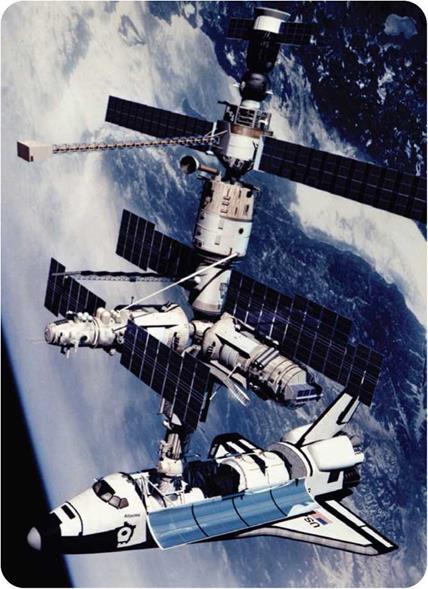 capsules, and unmanned Progress supply craft have docked with the Russian Mir space station and with the International Space Station.
capsules, and unmanned Progress supply craft have docked with the Russian Mir space station and with the International Space Station.
Docking is a difficult maneuver. In space, without any nearby landmarks by which to judge distance and speed, it is almost impossible to determine how far away a spacecraft is or how fast it is moving. A crew onboard the Mir
О Joining one spacecraft with another in space is called docking, and radar is needed for this maneuver to measure distances and speed of approach. This computer-generated image shows the Space Shuttle Atlantis docked to the Russian space station Mir, which orbited Earth from 1986 to 2001.
space station in 1997 discovered this problem when they were docking an unmanned supply craft with their space station without the use of radar. The craft, controlled by a cosmonaut in Mir, approached the station too fast and crashed into it.
Radar is usually used for all docking maneuvers. It provides accurate measurements of the distance between spacecraft and their closing speed. Linked to a spacecraft’s guidance system, it can carry out docking automatically. When the Apollo lunar excursion modules descended from lunar orbit to the Moon’s surface during the Apollo landings of the 1960s and 1970s, the descent was controlled by radar. Landing radar kept the guidance computer constantly updated with data on the spacecraft’s altitude and rate of descent.

Telecommunications providers use communications satellites (comsats), which function as relays for telephone, radio, and television signals. The first satellite able to relay a voice signal was launched in 1960; Telstar was the first real communications satellite, launched in 1962. Syncom 3, launched in geostationary orbit in 1963, relayed the 1964 Tokyo Olympics to U. S. viewers, the first television pictures sent across the Pacific Ocean. Intelsat 1, also known as “Early Bird,” relayed TV signals across the Atlantic in 1965. Satellites launched for commercial companies revolutionized satellite and cable TV. They made satellite television possible-today there are hundreds of channels, and live coverage of events is transmitted all over the world. Groups of satellites also provide worldwide phone networks.
Military comsats such as the U. S. Milstar system (launched in 1994) provide secure communications that cannot be blocked. In the 1960s, the Russians launched a series of Molniya comsats into elliptical, 12-hour orbits, with perigees (low points) of no more than a few hundred miles and apogees (high
О Geostationary operational environmental satellites (GOES) provide views of Earth that help forecasters accurately predict emergency weather conditions. This GOES image shows Hurricane Andrew over the Gulf of Mexico in 1992.
|
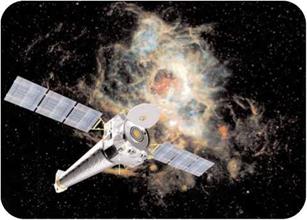
О Chandra, named for a leading Indian astrophysicist, Subrahmanyan Chandrasekhar, is one of the largest satellites ever. It carries eight mirrors to focus X-rays from distant objects, a high-resolution camera, and a spectrometer to measure the amount of energy in the X-rays.
|
points) of up to 25,000 miles (40,230 kilometers). This kind of orbit is now called a Molniya orbit. Less rocket power is needed to put a satellite into this orbit than into a high geostationary orbit.
The two world wars stimulated rapid progress in aeronautics as warring nations tried to produce the best fighter planes. Spotter planes that were used to spy on enemy forces in World War I (1914-1918) quickly developed into the
first fighters and bombers. Air speeds also increased. Before the war, most airplanes could reach a top speed of only about 35 to 45 miles per hour (about 56 to 72 kilometers per hour). By the end of the war, fighters such as the Sopwith Camel had a top speed of about 113 miles per hour (182 kilometers per hour).
During World War II (1939-1945), the top speed of propeller planes increased to more than 370 miles per hour (595 kilometers per hour). Jet fighters were developed during the war. The first, the German Messerschmitt Me-262, had a top speed of 540 miles per hour (869 kilometers per hour).
These and other developments were applied to airliners soon after the war. The first jet airliners were the De Havilland Comet and Boeing 707. Radar, developed during the war to detect
|
О The Global Hawk is an unmanned air vehicle. Once programmed, it can take off, fly a mission, and return to land by itself. Navigators on the ground can change its path if necessary.
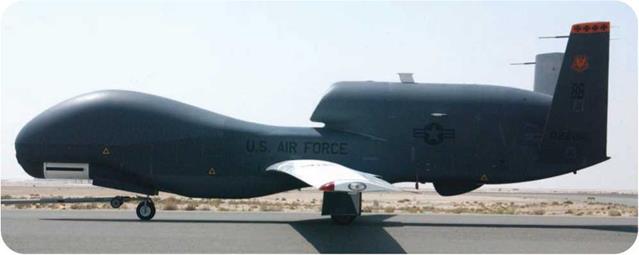
|
|
    enemy aircraft by bouncing radio waves off them, became the basis of air traffic control systems that guide today’s aircraft safely along invisible lanes in the sky. enemy aircraft by bouncing radio waves off them, became the basis of air traffic control systems that guide today’s aircraft safely along invisible lanes in the sky.
By 1969 the SR-N4 was carrying 600 passengers on ferry services between England and France at 80 miles per hour (129 kilometers per hour). The ACV featured four gas turbine engines driving airscrews and a tough, flexible skirt to keep the air cushion in place. The skirt also allowed the 160-ton (145-metric – ton) craft to ride over low obstacles without air escaping.
The first ACV skirts were like rubber curtains, and they quickly wore out. The modern ACV has a bag skirt, which looks like a thick tube and is made of
tough nylon and plastic. The craft rests on the bag when it is not moving.
Another type of ACV was developed for use over water only. Known as the sidewall ACV, it has a skirt only at front and back and rigid panels on its sides. The sidewall ACV skims over the water, like a hydrofoil ship, but this type cannot operate overland.
The early pioneers of flight found out by trial and error what worked and what did not. In 1890 Clement Ader of France built a steam-powered airplane. It was a failure, but it showed other designers that steam engines were too heavy for use in airplanes.
Experiments sometimes cost lives. In 1899, British engineer Percy Pilcher was killed when his glider crashed shortly before he was due to test an airplane with an engine. Had he survived, Pilcher might have beaten the Wright brothers by making the first powered, controlled flight in an airplane.
In 1901, American experimenter Samuel Pierpoint Langley tested a
О This multiplane, photographed in 1911, was based on designs by Horatio Phillips and had 110 narrow wings. Although his designs appeared eccentric, Phillips’s experimental aircraft increased knowledge of aerodynamics and successful wing shapes.
model airplane. Encouraged by its performance, he built the full-size Aerodrome. The plane crashed into the Potomac River, not once but twice, on December 7 and 8, 1903. Nine days later the Wrights’ Flyer took to the air at Kitty Hawk, North Carolina.
Many pioneer airplanes look strange to modern eyes. Some planes of the 1910s and 1920s were “pushers” (their propellers faced backward); others were “tractors” (the propellers faced forward). Throughout this period, there were experiments with biplanes (with two wings), triplanes (with three wings), and multiplanes (with many wings).
In the 1930s, experimenters sought higher speed with monoplanes that had single wings, sleek metal bodies, and more powerful engines. The first rocket – powered airplane flew in Germany in 1928. By 1940 the German Project X produced the DFS 194, an experimental rocket plane that led to the Me-163 rocket plane of World War II. As the war began in Europe, the first experimental jet planes roared into the skies, starting in 1939 with the German Heinkel 178.
In the early days of flight, advances in aircraft design were often helped along or speeded up by prize competitions. Newspapers, aviation organizations, and wealthy people offered trophies and large cash prizes to aviators who could build aircraft that would win races and make historic flights.
Between 1913 and 1931, seaplanes competed for the Schneider Trophy. The
 last three races were won by planes designed by Reginald Mitchell. When Britain needed a new fighter plane before World War II, Mitchell used his experience in designing racing planes to produce one of the most famous fighters of the war, the Spitfire. last three races were won by planes designed by Reginald Mitchell. When Britain needed a new fighter plane before World War II, Mitchell used his experience in designing racing planes to produce one of the most famous fighters of the war, the Spitfire.
Charles Lindbergh made the first solo nonstop flight across the Atlantic Ocean in 1927 to win the Orteig Prize. Lindbergh’s airplane was a standard Ryan M-2 airplane that was specially redesigned with bigger wings and extra fuel tanks for the longdistance flight.
The Gossamer Condor won the first Kremer Prize in 1977 for the first human-powered plane (using pedals) to fly a figure-eight course. In 1979 the Gossamer Albatross won the second Kremer Prize for the first human-powered flight across the English Channel in Europe. A third Kremer Prize, awarded for speed in a human-powered plane, was won in 1984 by a plane named the Monarch B.
Air races are still held today, but now they are more for sport and entertainment than to encourage advances in design. Some aircraft, however, are still specially designed to win prizes. The first privately developed space plane, SpaceShipOne, was designed by Burt Rutan to win the $10 million Ansari-X Prize in 2004. Rutan also designed the
Voyager airplane for the first nonstop round-the-world flight in 1986. He went on to design the Virgin Atlantic Global Flyer plane for the first solo, nonstop, round-the-world flight in 2005.
SEE ALSO:
• Aerodynamics • Bleriot, Louis
• Boeing • Control System • Curtiss,
Glenn • Engine • Materials and
Structures • Stability and Control
• Supersonic Flight
______________________________________________ /
| |











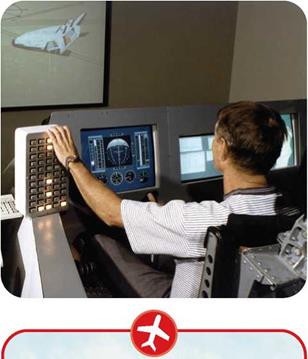
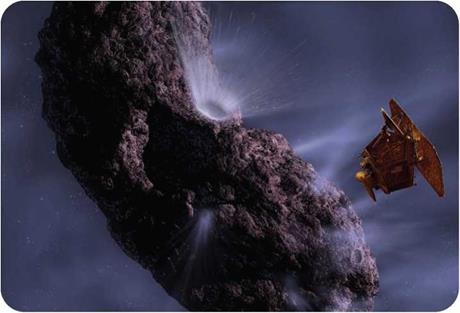 placed on a distant moving car. In spite of the challenges, however, space scientists have figured out how to send spacecraft where they want them to go. Most of the work needed to guide a space probe is done before the launch.
placed on a distant moving car. In spite of the challenges, however, space scientists have figured out how to send spacecraft where they want them to go. Most of the work needed to guide a space probe is done before the launch. О Most airline pilots in the United States belong to the Air Line Pilots Association, a labor union and professional organization for pilots founded in 1931.
О Most airline pilots in the United States belong to the Air Line Pilots Association, a labor union and professional organization for pilots founded in 1931. capsules, and unmanned Progress supply craft have docked with the Russian Mir space station and with the International Space Station.
capsules, and unmanned Progress supply craft have docked with the Russian Mir space station and with the International Space Station.

 enemy aircraft by bouncing radio waves off them, became the basis of air traffic control systems that guide today’s aircraft safely along invisible lanes in the sky.
enemy aircraft by bouncing radio waves off them, became the basis of air traffic control systems that guide today’s aircraft safely along invisible lanes in the sky. last three races were won by planes designed by Reginald Mitchell. When Britain needed a new fighter plane before World War II, Mitchell used his experience in designing racing planes to produce one of the most famous fighters of the war, the Spitfire.
last three races were won by planes designed by Reginald Mitchell. When Britain needed a new fighter plane before World War II, Mitchell used his experience in designing racing planes to produce one of the most famous fighters of the war, the Spitfire.